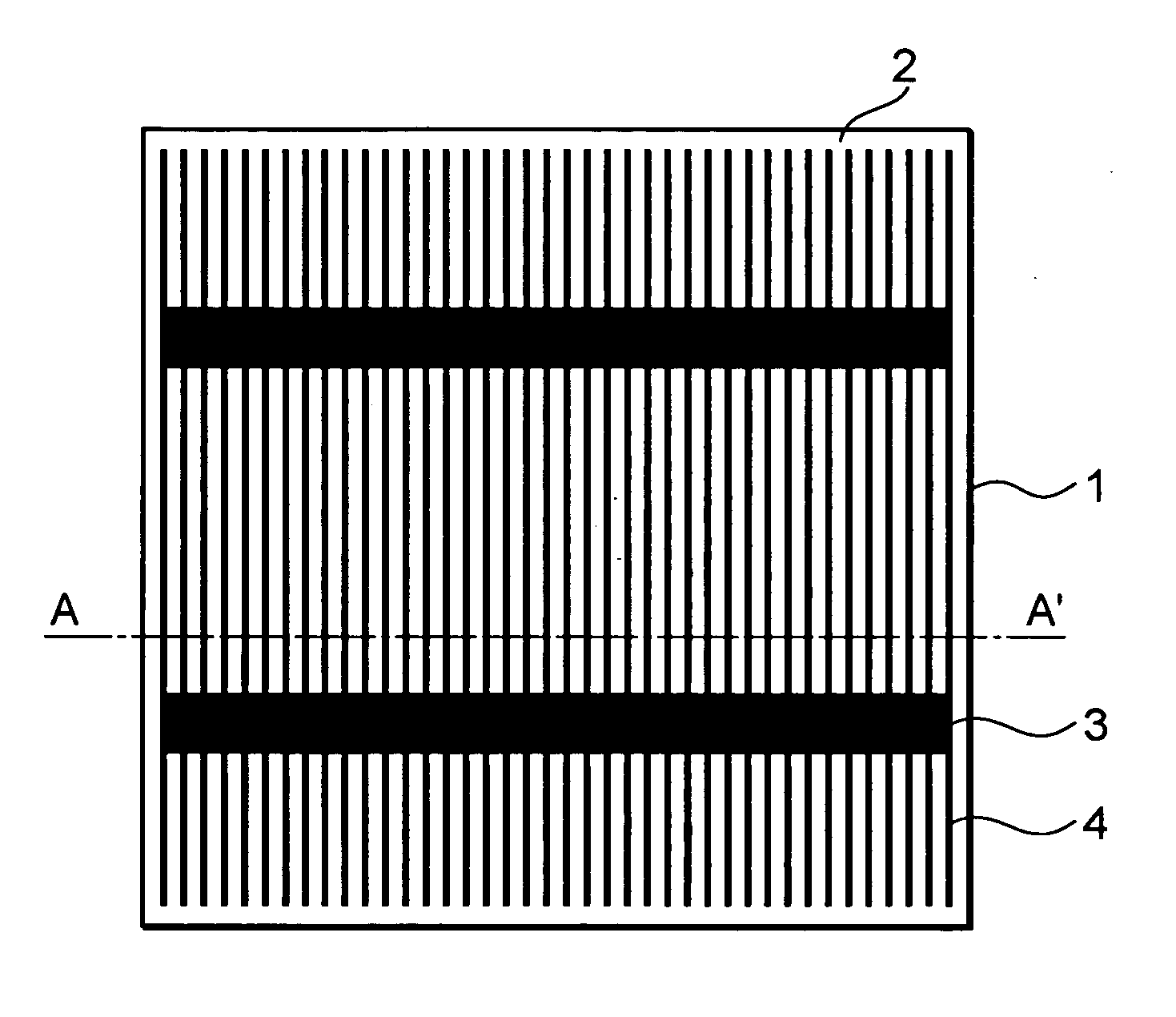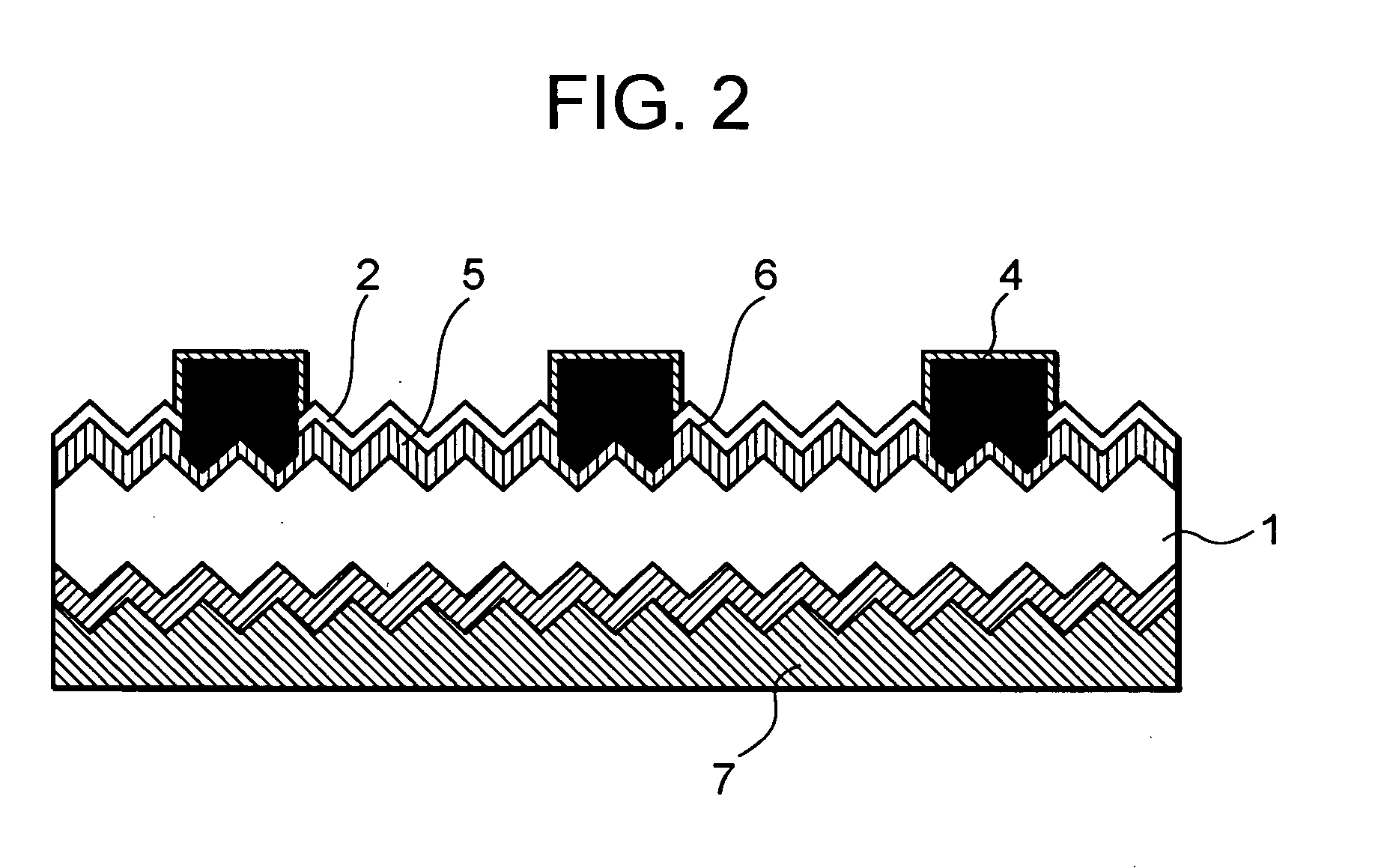Solar Cell And Manufacturing Method Therefor
a technology of solar cells and manufacturing methods, applied in the field of solar cells, can solve the problems of increasing the amount of material consumed for printing, increasing the cost of printing, and wasting resources, and achieve the effect of sufficient electrode performan
- Summary
- Abstract
- Description
- Claims
- Application Information
AI Technical Summary
Benefits of technology
Problems solved by technology
Method used
Image
Examples
embodiment 1
[0022] Embodiment 1 according to the present invention is explained based on figures. FIG. 1 is an arrangement view illustrating front-side electrodes of a silicon solar battery according to Embodiment 1 of the present invention. FIG. 2 is a magnified view illustrating a cross section along the line A-A represented in FIG. 1. FIG. 3 is explanatory views explaining main steps of manufacturing the solar battery according to Embodiment 1 of the present invention. FIG. 4 is front views illustrating mask patterns according to Embodiment 1 of the present invention. FIG. 5 is front views illustrating other mask patterns according to Embodiment 1 of the present invention.
[0023] When the solar battery is viewed from the front side, as represented in FIG. 1, a reflection prevention film 2 is formed on a p-type silicon substrate 1 so as to prevent light reflection and receive as much sunlight as possible, and front silver grid electrodes 4 electrically connected to front silver bus electrodes...
embodiment 2
[0042] Embodiment 2 according to the present invention is explained based on figures. FIG. 6 is front views illustrating mask patterns according to Embodiment 2 of the present invention. FIG. 7 is front views illustrating other mask patterns according to Embodiment 2 of the present invention.
[0043] Here, the structure and the manufacturing steps as a solar battery excluding the electrodes are the same as those in Embodiment 1, and the same numerals are attached to members that have equivalent functions to those having been explained in Embodiment 1.
[0044]FIG. 6 is views illustrating mask patterns used for manufacturing a solar battery according to the present invention. FIG. 6(a) is a view illustrating a first-cycle mask pattern, which is the same as the mask pattern 8 in FIG. 4(a) and FIG. 5(a) having been explained in Embodiment 1, and is composed of the bus-electrode mask pattern 9 and the grid-electrode mask pattern 10. On the other hand, FIG. 6(b) is a view illustrating a mas...
PUM
 Login to View More
Login to View More Abstract
Description
Claims
Application Information
 Login to View More
Login to View More - R&D
- Intellectual Property
- Life Sciences
- Materials
- Tech Scout
- Unparalleled Data Quality
- Higher Quality Content
- 60% Fewer Hallucinations
Browse by: Latest US Patents, China's latest patents, Technical Efficacy Thesaurus, Application Domain, Technology Topic, Popular Technical Reports.
© 2025 PatSnap. All rights reserved.Legal|Privacy policy|Modern Slavery Act Transparency Statement|Sitemap|About US| Contact US: help@patsnap.com



